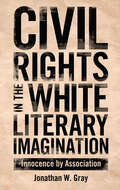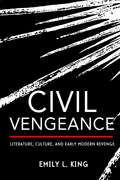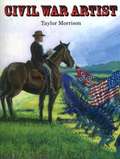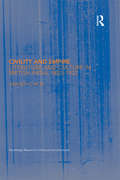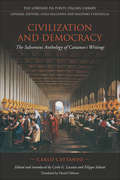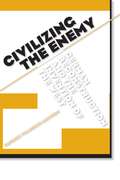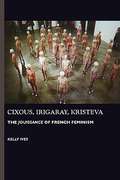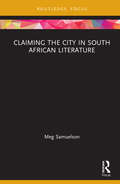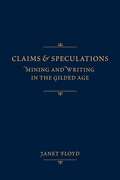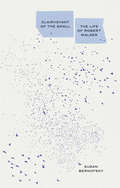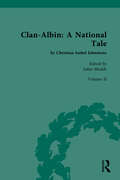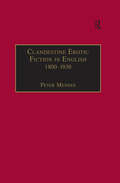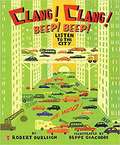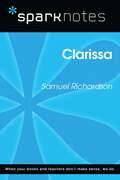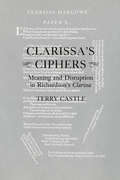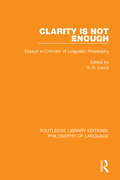- Table View
- List View
Civil Rights Heroes (Great Minds Wit & Wisdom #Grade 2 Module 3)
by Great MindsNIMAC-sourced textbook
Civil Rights Heroes: Assessment Pack (Great Minds Wit & Wisdom #Grade 2, Module 3)
by Great MindsNIMAC-sourced textbook
Civil Rights in the White Literary Imagination: Innocence by Association
by Jonathan W. GrayThe statement, “The Civil Rights Movement changed America,” though true, has become something of a cliché. Civil Rights in the White Literary Imagination seeks to determine how, exactly, the Civil Rights Movement changed the literary possibilities of four iconic American writers: Robert Penn Warren, Norman Mailer, Eudora Welty, and William Styron. Each of these writers published significant works prior to the Brown v. Board of Education case in 1954 and the Montgomery Bus Boycott that began in December of the following year, making it possible to trace their evolution in reaction to these events. The work these writers crafted in response to the upheaval of the day, from Warren's Who Speaks for the Negro?, to Mailer's “The White Negro” to Welty's “Where Is the Voice Coming From?” to Styron's Confessions of Nat Turner, reveal much about their own feeling in the moment even as they contribute to the national conversation that centered on race and democracy. By examining these works closely, Gray posits the argument that these writers significantly shaped discourse on civil rights as the movement was occurring but did so in ways that—intentionally or not—often relied upon a notion of the relative innocence of the South with regard to racial affairs, and on a construct of African Americans as politically and/or culturally naive. As these writers grappled with race and the myth of southern nobility, their work developed in ways that were simultaneously sympathetic of, and condescending to, black intellectual thought occurring at the same time.
Civil Vengeance: Literature, Culture, and Early Modern Revenge
by Emily L. KingWhat is revenge, and what purpose does it serve? On the early modern English stage, depictions of violence and carnage—the duel between Hamlet and Laertes that leaves nearly everyone dead or the ghastly meal of human remains served at the end of Titus Andronicus—emphasize arresting acts of revenge that upset the social order. Yet the subsequent critical focus on a narrow selection of often bloody "revenge plays" has overshadowed subtler and less spectacular modes of vengeance present in early modern culture.In Civil Vengeance, Emily L. King offers a new way of understanding early modern revenge in relation to civility and community. Rather than relegating vengeance to the social periphery, she uncovers how facets of society—church, law, and education—relied on the dynamic of retribution to augment their power such that revenge emerges as an extension of civility. To revise the lineage of revenge literature in early modern England, King rereads familiar revenge tragedies (including Marston's Antonio's Revenge and Kyd's The Spanish Tragedy) alongside a new archive that includes conduct manuals, legal and political documents, and sermons. Shifting attention from episodic revenge to quotidian forms, Civil Vengeance provides new insights into the manner by which retaliation informs identity formation, interpersonal relationships, and the construction of the social body.
Civil War Artist
by Taylor MorrisonWilliam Forbes arrives in New York in 1861, eager to start a career as an artist. When he has difficulty finding work, he signs on with Burton's Illustrated News to sketch the battles of the Civil War. This historical account shows how the news was reported, from William's sketches of dangerous battle scenes through the making of a wood engraving and finally to the printed page of the newspapers of the day.
Civil War Writing: New Perspectives on Iconic Texts (Conflicting Worlds: New Dimensions of the American Civil War)
by William C. Davis Gary W. Gallagher Stephen Cushman Keith Bohannon Sarah Gardner Matthew Gallman Kathryn Shively Brenda Stevenson Elizabeth Varon T. Michael ParrishCivil War Writing is a collection of new essays that focus on the most significant writing about the American Civil War by participants who lived through it, whether as civilians or combatants, southerners or northerners, women or men, blacks or whites. Collectively, as contributors show, these writings have sustained their influence over generations and include histories, memoirs, journals, novels, and one literary falsehood posing as an autobiographical narrative. Several of the works, such as William Tecumseh Sherman’s memoirs or Mary Chesnut’s diary, are familiar to scholars, but other accounts, including Charlotte Forten’s diary and Loreta Velasquez’s memoir, offer new material to even the most omnivorous Civil War reader. In all cases, a deeper look at these writings reveals why they continue to resonate with audiences more than 150 years after the end of the conflict. As supporting evidence for historical and biographical narratives and as deliberately designed communications, the writings discussed in this collection demonstrate considerable value. Whether exploring the differences among drafts and editions, listening closely to fluctuations in tone or voice, or tracing responses in private correspondence or published reviews, the essayists examine how authors wrote to different audiences and out of different motives, creating a complex literary record that offers rich potential for continuing evaluation of the country’s greatest national trauma. Overall, the essays in Civil War Writing underscore how participants employed various literary forms to record, describe, and explain aspects and episodes of a conflict that assumed proportions none of them imagined possible at the outset.
Civility and Empire: Literature and Culture in British India, 1821-1921 (Routledge Research in Postcolonial Literatures #Vol. 7)
by Anindyo RoyThis book addresses the idea of 'civility' as a manifestation of the fluidity and ambivalence of imperial power as reflected in British colonial literature and culture. Discussions of Anglo-Indian romances of 1880-1900, E.M. Forster's The Life to Come and Leonard Woolf's writings show how the appeal to civility had a significant effect on the constitution of colonial subject-hood and reveals 'civility' as an ideal trope for the ambivalence of imperial power itself.
Civilization and Democracy
by Filippo Sabetti Carlo Cattaneo Carlo LacaitaNineteenth-century Italy is a vast, unexplored territory in the history of modern political thought and liberal democratic theory. Apart from Mazzini, Pareto, and Mosca, the authors of this period are little read, even though their central concerns - the riddle of human liberation, progress, and liberty - are as important today as ever. This volume presents a selection of the writings of Carlo Cattaneo (1801-1869), one of the period's most important thinkers, as selected by an equally important personage of a subsequent time, the anti-Fascist intellectual Gaetano Salvemini.Cattaneo had a profound sense of the historical contingencies underlying the quest both to understand human affairs and to realize a self-governing society. Cattaneo's ideas and framework of analysis - like those of John Stuart Mill and Alexis de Tocqueville - were not shaped by a narrow intra-academic agenda but by the great social, economic, and political transformations of his time. The issues he addressed included problems of revolution, reform, and change in the passage to modernity, which extended far beyond the confines of nineteenth-century Italy.The selection of original pieces presented in this translation is preceded by an introduction by the editors, Carlo G. Lacaita and Filippo Sabetti, which guides the reader through Cattaneo's thinking and puts it in a comparative context. Ultimately, however, it is the editors' goal to let this profound Italian thinker speak for himself.
Civilizing the Enemy: German Reconstruction and the Invention of the West
by Patrick Thaddeus JacksonFor the past century, politicians have claimed that "Western Civilization" epitomizes democratic values and international stability. But who is a member of "Western Civilization"? Germany, for example, was a sworn enemy of the United States and much of Western Europe in the first part of the twentieth century, but emerged as a staunch Western ally after World War II. By examining German reconstruction under the Marshall Plan, author Patrick Jackson shows how the rhetorical invention of a West that included Germany was critical to the emergence of the postwar world order. Civilizing the Enemyconvincingly describes how concepts are strategically shaped and given weight in modern international relations, by expertly dissecting the history of "the West" and demonstrating its puzzling persistence in the face of contradictory realities. "By revisiting the early Cold War by means of some carefully conducted intellectual history, Patrick Jackson expertly dissects the post-1945 meanings of "the West" for Europe's emergent political imaginary. West German reconstruction, the foundation of NATO, and the idealizing of 'Western civilization' all appear in fascinating new light. " --Geoff Eley, University of Michigan "Western civilization is not given but politically made. In this theoretically sophisticated and politically nuanced book, Patrick Jackson argues that Germany's reintegration into a Western community of nations was greatly facilitated by civilizational discourse. It established a compelling political logic that guided the victorious Allies in their occupation policy. This book is very topical as it engages critically very different, and less successful, contemporary theoretical constructions and political deployments of civilizational discourse. " --Peter J. Katzenstein, Cornell University "What sets Patrick Jackson's book apart is his attention, on the one hand, to philosophical issues behind the kinds of theoretical claims he makes and, on the other hand, to the methodological implications that follow from those claims. Few scholars are willing and able to do both, and even fewer are as successful as he is in carrying it off. Patrick Jackson is a systematic thinker in a field where theory is all the rage but systematic thinking is in short supply. " --Nicholas Onuf, Florida International University Patrick Thaddeus Jacksonis Assistant Professor of International Relations in American University's School of International Service.
Cixous, Irigaray, Kristeva: The Jouissance of French Feminism
by Kelly IvesJulia Kristeva, Hélène Cixous and Luce Irigaray are among the provocative, and subtle voices in contemporary culture. Here, Kelly Ives discusses their major ideas and their relation to other feminists and to figures such as Marx, Lacan and Freud.
Claiming Breath
by Diane Glancy"This is a rich, satisfying book, full of wisdom."-Choice. "Glancy is a major voice in Native America today. Claiming Breath is a refreshingly honest depiction of contemporary life and an important step in American Indian literature. Non-Indian readers can learn much from Glancy's text, which presents an Indian worldview complete in its holistic complexity and integrity."-American Indian Culture and Research Journal. "An important addition to the literature of white-Indian cultural interrelationships."-World Literature Today. Like poets of legend, Diane Glancy has spent much of her life on the road. For years she supported her family by driving throughout Oklahoma and Arkansas teaching poetry in the schools. Claiming Breath is an account of one of those years, what Glancy calls "a winter count of sorts, a calendar, a diary of personal matters . . . and a final acceptance of the broken past. . . . It's a year that covers more than a year." Diane Glancy teaches creative writing and Native American literature at Macalester College in St. Paul, Minnesota. Her collections of poetry, Iron Woman, and of short fiction, Trigger Dance, have also won major prizes.
Claiming the City in South African Literature
by Meg SamuelsonThis book demonstrates the insights that literature brings to transdisciplinary urban studies, and particularly to the study of cities of the South. Starting from the claim staked by mining capital in the late nineteenth century and its production of extractive and segregated cities, it surveys over a century of writing in search of counterclaims through which the literature reimagines the city as a place of assembly and attachment. Focusing on how the South African city has been designed to funnel gold into the global economy and to service an enclaved minority, the study looks to the literary city to advance a contrary emphasis on community, conviviality and care. An accessible and informative introduction to literature of the South African city at significant historical junctures, this book will also be of great interest to scholars and students in urban studies and Global South studies.
Claims and Speculations: Mining and Writing in the Gilded Age
by Janet FloydMines have always been hard and dangerous places. They have also been as dependent upon imaginative writing as upon the extraction of precious materials. This study of a broad range of responses to gold and silver mining in the late nineteenth century sets the literary writings of figures such as Mark Twain, Mary Hallock Foote, Bret Harte, and Jack London within the context of writing and representation produced by people involved in the industry: miners and journalists, as well as writers of folklore and song.Floyd begins by considering some of the grand narratives the industry has generated. She goes on to discuss particular places and the distinctive work they generated—the short fictions of the California Gold Rush, the Sagebrush journalism of Nevada&’s Comstock Lode, Leadville romance, and the popular culture of the Klondike.With excursions to Canada, South Africa, and Australia, Floyd looks at how the experience of a destructive and chaotic industry produced a global literature.
Clairvoyant of the Small: The Life of Robert Walser
by Susan BernofskyThe first English-language biography of one of the great literary talents of the twentieth century, written by his award-winning translator"Masterful. . . . This balanced and meticulous account shines a bright light on a misunderstood and influential writer.."--Publishers Weekly, Starred Review The great Swiss-German modernist author Robert Walser lived eccentrically on the fringes of society, shocking his Berlin friends by enrolling in butler school and later developing an urban-nomad lifestyle in the Swiss capital, Bern, before checking himself into a psychiatric clinic. A connoisseur of power differentials, his pronounced interest in everything inconspicuous and modest—social outcasts and artists as well as the impoverished, marginalized, and forgotten—prompted W. G. Sebald to dub him &“a clairvoyant of the small.&” His revolutionary use of short prose forms won him the admiration of Franz Kafka, Walter Benjamin, Robert Musil, and many others. He was long believed an outsider by conviction, but Susan Bernofsky presents a more nuanced view in this immaculately researched and beautifully written biography. Setting Walser in the context of early twentieth century European history, she provides illuminating analysis of his extraordinary life and work, bearing witness to his &“extreme artistic delight.&”
Clan-Albin: by Christian Isobel Johnstone (Chawton House Library: Women's Novels)
by Juliet ShieldsChristian Isobel Johnstone’s Clan-Albin: A National Tale was published in 1815, less than a year after Walter Scott’s Waverley; or ‘tis Sixty Years Since enthralled readers and initiated a craze for Scottish novels. Both as a novelist and as editor of Tait’s Edinburgh Magazine from 1834 to 1846, Johnstone was a powerful figure in Romantic Edinburgh’s literary scene. But her works and her reputation have long been overshadowed by Scott’s. In Clan-Albin, Johnstone engages with themes on British imperial expansion, metropolitan England’s economic and political relationships with the Celtic peripheries, and the role of women in public life. This rare novel, alongside extensive editorial commentary, will be of much interest to students of British Literature.
Clan-Albin: by Christian Isobel Johnstone (Chawton House Library: Women's Novels)
by Juliet ShieldsChristian Isobel Johnstone’s Clan-Albin: A National Tale was published in 1815, less than a year after Walter Scott’s Waverley; or ‘tis Sixty Years Since enthralled readers and initiated a craze for Scottish novels. Both as a novelist and as editor of Tait’s Edinburgh Magazine from 1834 to 1846, Johnstone was a powerful figure in Romantic Edinburgh’s literary scene. But her works and her reputation have long been overshadowed by Scott’s. In Clan-Albin, Johnstone engages with themes on British imperial expansion, metropolitan England’s economic and political relationships with the Celtic peripheries, and the role of women in public life. This rare novel, alongside extensive editorial commentary, will be of much interest to students of British Literature.
Clandestine Erotic Fiction in English 1800–1930: A Bibliographical Study
by Peter MendesThis work offers bibliographical descriptions of all printings of erotic fiction in English issued clandestinely during the period 1800-1930. By 'clandestine' is meant books whose publishers and printers attempt to hide their identities, usually by offering title pages whose misleading places and dates of publication may shock and amuse, but which always aim to mystify. Using internal and external evidence, an attempt is made to establish who were the printers, booksellers and publishers, English and Continental, involved in this trade. The printing families or 'groups' into which a large percentage of the material falls are classified, accompanied by illustrations which identify the main printing characteristics ('house styles') of the groups. Bibliographical descriptions follow a checklist of clandestine catalogues; these provide valuable evidence for dating, pricing and 'sales pitch' and information on items of which no copies can now be traced. The work concludes with a series of appendices which provide significant external evidence, and three indexes: of themes, titles and names. Peter Mendes' original research builds on and significantly extends the essential pioneer work of the Victorian collector and bibliographer H.S. Ashbee ('Pisanus Fraxi').
Clandestine Marriage: Botany and Romantic Culture
by Theresa M. KelleyBotany in the romantic era played a role in debates about life, nature, and knowledge, as evidenced in this ambitious, beautifully illustrated study.Winner, 2012 British Society for Literature and Science Book PrizeRomanticism was a cultural and intellectual movement characterized by discovery, revolution, and the poetic as well as by the philosophical relationship between people and nature. Botany sits at the intersection where romantic scientific and literary discourses meet. Clandestine Marriage explores the meaning and methods of how plants were represented and reproduced in scientific, literary, artistic, and material cultures of the period. Theresa M. Kelley synthesizes romantic debates about taxonomy and morphology, the contemporary interest in books and magazines devoted to plant study and images, and writings by such authors as Mary Wollstonecraft and Anna Letitia Barbauld. Period botanical paintings of flowers are reproduced in vibrant color, bringing her argument and the romantics' passion for plants to life.In addition to exploring botanic thought and practice in the context of British romanticism, Kelley also looks to the German philosophical traditions of Kant, Hegel, and Goethe and to Charles Darwin’s reflections on orchids and plant pollination. Her interdisciplinary approach allows a deeper understanding of a time when exploration of the natural world was a culture-wide enchantment.
Clandestine Philosophy: New Studies on Subversive Manuscripts in Early Modern Europe, 1620–1823 (UCLA Clark Memorial Library Series)
Clandestine philosophical manuscripts, made up of forbidden works including erotic texts, political pamphlets, satires of court life, forbidden religious texts, and books about the occult, had an avid readership in the seventeenth and eighteenth centuries, becoming objects of historical research by the twentieth century. The purveyors of the clandestine could be found in the Dutch Republic, Switzerland, Denmark, Spain, and not least in Paris or London. Despite the heavy risks, including prison, the circulation of these manuscripts was a prosperous venture. After Ira Wade’s pioneering contribution (1938), Clandestine Philosophy is the first work in English entirely focused on the philosophical clandestine manuscripts that preceded and accompanied the birth of the Enlightenment. Topics from philosophy, political and religious thought, and moral and sexual behaviour are addressed by contemporary authors working in both America and Europe. These manuscripts shed light on the birth of pornography and provide an important avenue for investigating philosophical, religious, political, and social critique.
Clang! Clang! Beep! Beep! Listen to the City: Listen To The City (Elementary Core Reading Ser.)
by Robert Burleigh Beppe GiacobbeNIMAC-sourced textbook <P><P>From morning until night, a city is filled with such sounds as the roars and snores of a subway ride, the flutters and coos of pigeons, and the shouts and beeps of drivers in traffic.
Clar i català: Els barbarismes (i barbaritats) més freqüents i com pots evitar-los
by Jo Aprenc Català @joaprenccatalaAra és l’hora de parlar clar i català! Descobreix els barbarismes més comuns i com evitar-los en un llibre imprescindible. 100 BARBARISMES PER APRENDRE A PARLAR MILLOR LA LLENGUA (CATALANA) Parles sovint en català, però de tant en (quant) tant deixes anar un barbarisme? Et (dona apuro) fa vergonya cometre errors però no saps com evitar-los? (Menos mal) Encara sort que tens aquest llibre!Deixa't de (tonteries) ximpleries i comença a (exprimir) esprémer la llengua com mai. Descobreix 100 barbarismes de la llengua catalana, aprèn les seves formes en català i enriqueix el teu vocabulari amb les expressions més genuïnes i divertides de la nostra llengua. HA ARRIBAT L'HORA DE DONAR UNA (PATADA) PUNTADA DE PEU ALS BARBARISMES I PARLAR LA LLENGUA COM CAL!
Clarissa (SparkNotes Literature Guide Series)
by SparkNotesClarissa (SparkNotes Literature Guide) by Samuel Richardson Making the reading experience fun! Created by Harvard students for students everywhere, SparkNotes is a new breed of study guide: smarter, better, faster.Geared to what today's students need to know, SparkNotes provides:chapter-by-chapter analysis explanations of key themes, motifs, and symbols a review quiz and essay topics Lively and accessible, these guides are perfect for late-night studying and writing papers.
Clarissa on the Continent: Translation and Seduction (G - Reference, Information and Interdisciplinary Subjects)
by Thomas O. Beebee"Clarissa" on the Continent defines and explores two strategies of literary translation—creative vs. preservative and strong vs. weak—as they transform one of the most influential English novels. Thomas Beebee compares the two opposing strategies as they influence the French translation of Clarissa by the novelist Antione François de Prévost and the German translation by the Göttingen Orientalist Johann David Michaelis, and in doing so he demonstrates that each translator found authority for his procedure within the text itself. Each translation is also examined in light of Richardson's other writings and placed in its literary and cultural context. This study uses translations in order to interpret Clarissa, to show how the basis for the novel's reception on the Continent was laid, and to explore the differences and interactions among three literary and cultural systems of the eighteenth century. The close examination of these two important translations enable the formulation of not only a theory of creative vs. preservative translation but also the interconnections between literary theory and translation theory. Beebee also looks at later translations of Clarissa as products of literary and historical change and at Prévostian strategies of the novel.
Clarissa's Ciphers: Meaning and Disruption in Richardson's Clarissa
by Terry CastleAs Samuel Richardson's 'exemplar to her sex,’ Clarissa in the eponymous novel published in 1748 is the paradigmatic female victim. In Clarissa’s Ciphers, Terry Castle delineates the ways in which, in a world where only voice carries authority, Clarissa is repeatedly silenced, both metaphorically and literally. A victim of rape, she is first a victim of hermeneutic abuse. Drawing on feminist criticism and hermeneutic theory, Castle examines the question of authority in the novel. By tracing the patterns of abuse and exploitation that occur when meanings are arbitrarily and violently imposed, she explores the sexual politics of reading.
Clarity Is Not Enough: Essays in Criticism of Linguistic Philosophy (Routledge Library Editions: Philosophy Of Language Ser.)
by H. D. LewisThis book, originally published in 1963 provides a sample of the criticisms of philosophers on the course of linguistic philosophy. A chronological ordr is followed, with work ranging from that of traditionalist thinkers to second thoughts about linguistic philosophy on the part of writers who have been influenced by the movement.

